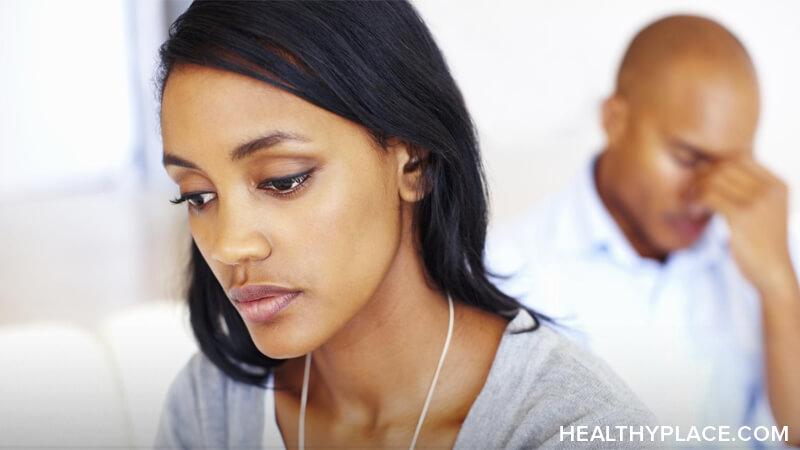How Does Sexual Harassment Affect Rape Survivors?

The #MeToo hashtag campaign exposed sexual violence (including sexual harassment and rape) as a significant event in the lives of most women. One of the most common forms of this violence is sexual harassment. A few examples of sexual harassment are catcalling, suggestive comments at school or work, and unwanted sexual advances. Many women have experienced at least one instance of everyday sexual harassment, and one in five has experienced a major act of sexual violence, like rape.
Many of the women experiencing sexual violence will also develop posttraumatic stress disorder. This means that female survivors of rape and other major acts of sexual violence are forced to experience comparatively milder forms of sexual violence before and after the major trauma. Can the prevalence of PTSD among female sexual assault survivors be related to the commonality of sexual harassment?
Sexual Harassment Affected Me, a Rape Survivor
Acts of Sexual Harassment Affected Me Before and After the Rape
The first time I experienced sexual violence was not at the hands of the man who raped me. It was at the hands of a stranger. On my way home from elementary school, I stood with my mom while we waited to cross the street. I was singing a show-tune from my favorite Broadway musical. A stranger grabbed my butt, then dashed away. I was eight years old.
That was just the first time my body became an unwilling vessel for someone else's pleasure. Between that first event at age eight and the first time I was raped by my abusive boyfriend as a teenager, I experienced a number of other incidents. Everything from stalking, to groping, to street harassment. A man followed me across two public buses into my high school. Boys who were my friends took turns grabbing my butt without asking. Numerous men catcalled me or solicited me for sex, even though I was clearly underage. Various boys and men criticized the shape and size of my body.
It Felt Like Rape Was a Natural Progression of Sexual Harassment
The traumatic sexual violence I experienced was preceded by a number of smaller abuses. The instances of harassment, groping, and appraisal chipped away at my self-esteem, making me feel like a cheap piece of property. By the time my abuser raped me at knife-point, I had experienced such a legacy of sexual violence that the rape felt like the natural culmination of everything that had come before (3 Ways Rape Culture Impacts Rape Survivors’ Mental Health).
After my abusive relationship, men have continued to comment on my body and occasionally touch it without my permission. I'm finally learning to speak up for myself and fight back, but for years I allowed workplace harassment, street harassment, and intimate partner cruelty to continue unspoken. The smaller acts of sexual violence opened the door for larger acts, and the larger acts made the smaller ones seem unimportant in comparison. I have been trapped in a cycle of sexual violence almost as long as I have been alive.
For Rape Survivors, Sexual Harassment Probably Makes PTSD Worse
The National Institute of Mental Health says that added stress after a traumatic event leaves a trauma survivor more vulnerable to developing PTSD.1 So, when a stranger brushes a woman's breast after she has been raped, that's added stress. Likewise any form of sexual harassment counts as an added stressor for someone who has recently experienced rape or sexual assault. This means that everyday sexual harassment increases the risk that a survivor of sexual assault will develop posttraumatic stress disorder.
Statistics only strengthen this theory. According to the National Sexual Violence Resource Center, 81% of female sexual assault survivors report PTSD symptoms.2 That is in contrast to just 35% of men reporting the same. Of course, there are a number of variables possibly affecting this statistic, but as Naomi Breslau and David F. Tonlin write in their report Sex Differences In Risk Of PTSD, published by the National Center for PTSD, the sexual-social female experience cannot be discounted as a factor in the higher rate of PTSD in women:
...the cumulative effects of repeated traumatization must be taken into account. It might be argued that women are more likely than men to experience multiple traumas across the lifespan, which may increase their risk of developing PTSD. 3
We Can Help Women Feel Safer in Public Spaces
It's possible to help make public spaces feel safer for women who have survived sexual trauma. The experiences of male sexual assault survivors are important too. Anyone who has been assaulted deserves compassion, support, and healing regardless of gender. But that does not mean we can ignore the fact that women who are raped face extra barriers to recovery.
Everyday sexual harassment is real, and it is insidious. In this video, I discuss how the female experience of public spaces differs from the male experience, and how men can do their part to help women feel safer in shared spaces.
References
1 Post-Traumatic Stress Disorder. (n.d.). Retrieved October 25, 2017, from National Institute of Mental Health.
2 Statistics about sexual violence. (n.d.) Retrieved October 25, 2017, from the National Sexual Violence Resource Center.
3 Tolin, D. F., PhD, & Breslau, N., PhD. (2007). Sex Differences In Risk Of PTSD. Retrieved October 25, 2017, from The National Center for Posttraumatic Stress Disorder.
PTSD Research Quarterly, Vol. 18 No. 2.
APA Reference
Brico, E.
(2017, October 25). How Does Sexual Harassment Affect Rape Survivors?, HealthyPlace. Retrieved
on 2025, December 2 from https://www.healthyplace.com/blogs/traumaptsdblog/2017/10/sexual-harassment-ptsd
Author: Elizabeth Brico
Thank you. I appreciate you reading and taking the time to leave this kind comment.